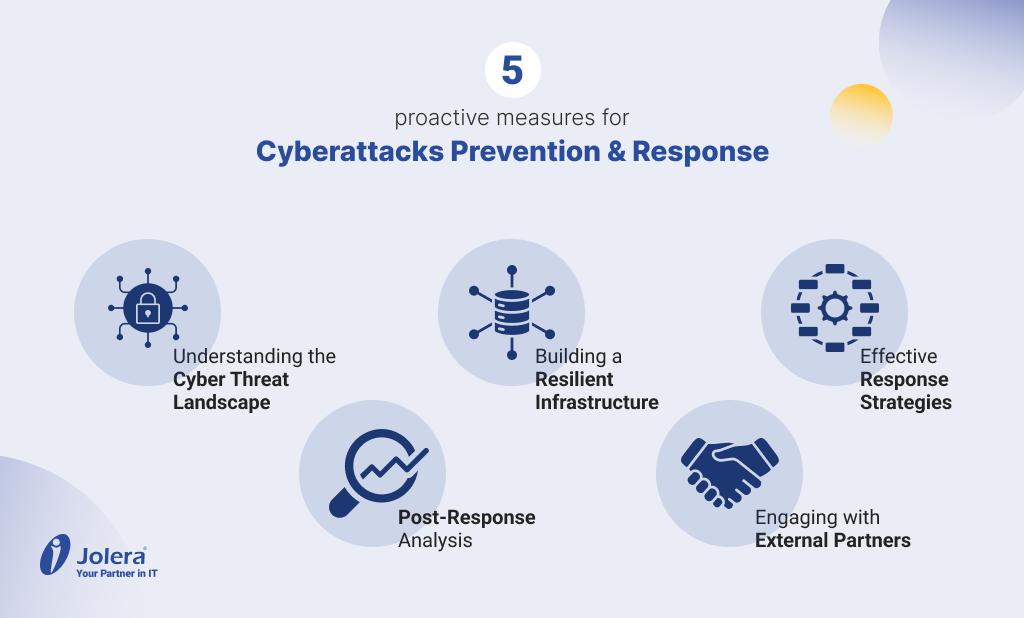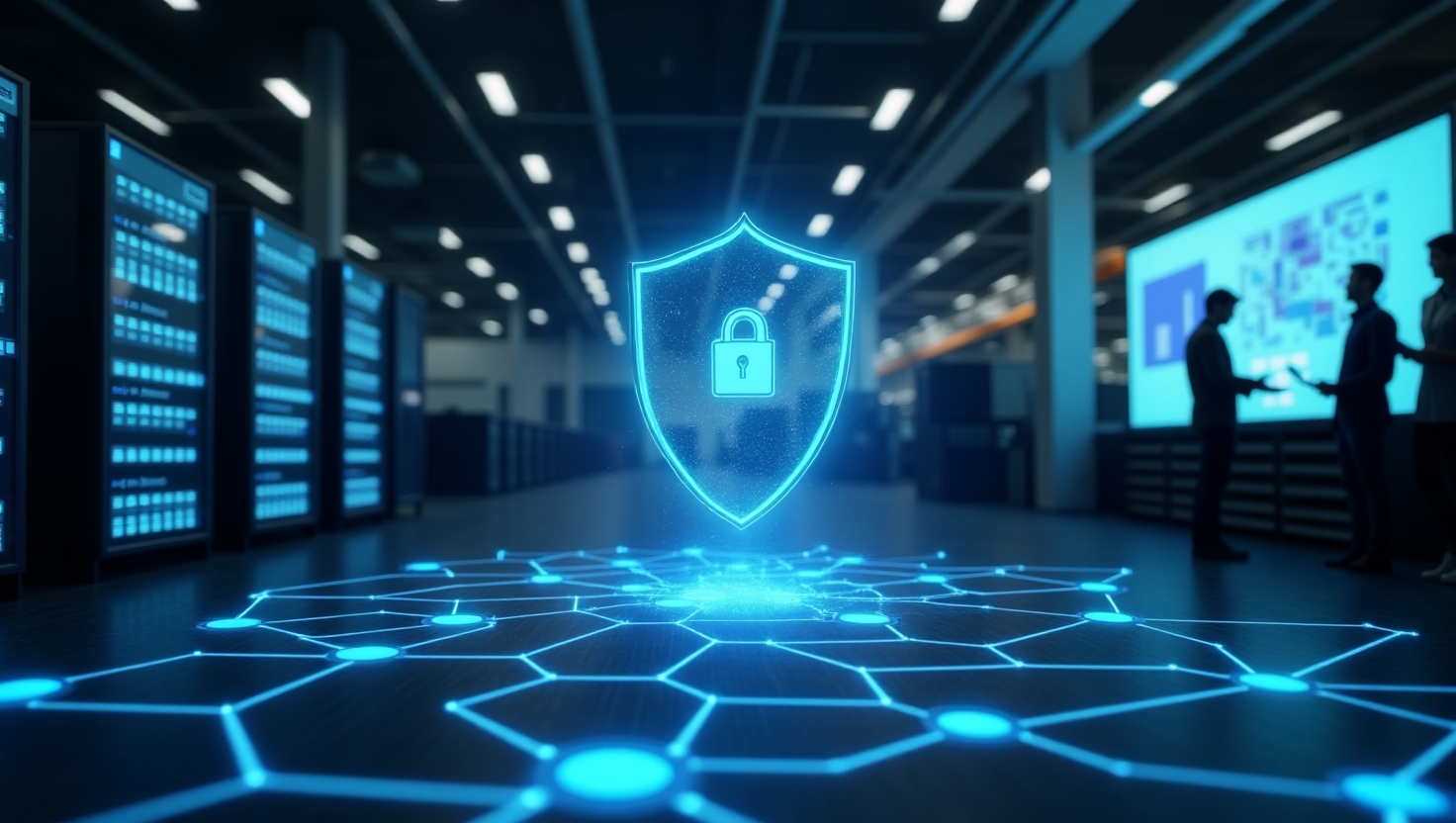Best New Strategies for Prevention and Response to a Cyber Attack
Cyber warfare and ransomware continue to break records. As 2023 nears its end, the average cost of a data breach has reached another record high of US$4.45 million, according to the 2023 Ponemon Institute Cost of a Data Breach report commissioned by IBM.
Beyond the record setting, cyber attacks and ransomware in the past two years has done unprecedented damage across the globe. These record-breaking figures underscore the need for robust cybersecurity strategies in every organization, irrespective of size or sector.
This article aims to dissect the various facets of cybersecurity, focusing primarily on five areas in which to build the proactive measures necessary to avert and manage cyber incidents effectively. It will outline the current cyber threat landscape globally and delve into the vital components of a resilient cybersecurity infrastructure. Finally, this article will explore new effective response strategies that go beyond mere containment. In addition, it will also examine the importance of learning from past incidents and the role external partnerships play in bolstering an organization’s cybersecurity defenses.

Understanding the Cyber Threat Landscape
Today’s threat landscape is characterized by an ever-evolving array of cyber threats. Ransomware attacks have seen a meteoric rise of a whopping 93 per cent year-over-year, reflecting the agility and audacity of modern cybercriminals. What is truly scary for any organization is the average time to identify and contain a breach. Today that number stands at a concerning 277 days, according to the same IBM/Ponemon report. The challenge of those 277 days is that on average it takes 207 of those days just to identify the problem and the remaining 70 days to contain it. No organization has that kind of time to lose, and it highlights the many nightmare scenarios and roadblocks in their quest for cybersecurity and protection of data, resources and people.
Cybercrooks have become more business savvy recently. The increasing prevalence of cybercrime-as-a-service models, for example, and sophisticated attack methods have added complex layers to the threat landscape. Cybercriminals are now offering their malicious services on a subscription basis as if it were a Netflix subscription. This new trend leads to a startling increase in the frequency of ransomware breaches. Moreover, the current geopolitical tensions starting with the Russia-Ukraine conflict in 2022, have contributed to a 16 per cent increase in global cyberattacks, according to sources from the Built In expert contributor network.
One of the many reasons why cybercriminals consistently find success is that the organizations they target lack the understanding that cyber threats are not just external, insider threats, whether intentional or unintentional, account for a significant portion of breaches. This thought process is quite common. After all, protecting against cyberattack usually begins with guarding against external threats. However, according to a previous IBM/Ponemon security study cyberattacks account for only half of the root causes of data breaches. That means the other half must come from internal threats, while some are accounted for system glitches.
Howard Solomon, a contributing security reporter for IT World Canada, said cybersecurity awareness can be a sticky question. Small companies, for example, could have a complete understanding of their security issues, but yet do not have the financial resources to put in place an in-depth cyber security program.
“It’s easier for larger organizations to understand their cybersecurity threats because they have a larger more experienced IT and security teams. It’s harder for smaller companies because they have a smaller IT and security team, and less money. Therefore, they are more vulnerable. There is more to determine for these companies when it comes to cyber security and sometimes what they devote to it is as much as they can and they keep their fingers crossed.”
Howard Solomon
Security Reporter, IT World Canada
Prevention: Building a Resilient Infrastructure
The cornerstone of any robust cybersecurity strategy is prevention. This involves a multifaceted approach, encompassing everything from regular software updates to comprehensive employee training programs. However, as Sagar Vyas, Chief Information & Security Officer at Jolera, points out, prevention is not merely about implementing controls; it’s about the continuous journey of improvement and industry-wide collaboration.
“In cybersecurity, prevention extends beyond the mere implementation of controls. It represents a continuous journey of improvement, a process of learning and adapting not just within an organization, but also through collaboration across the industry. At Jolera, we advocate for this holistic approach, ensuring that our strategies are comprehensive and constantly evolving in response to new threats.”
Sagar Vyas
Chief Information & Security Officer, Jolera
Effective Response Strategies
An effective cyber incident response plan is a critical component of any cybersecurity strategy. This plan should detail the steps for rapid detection, containment, and recovery from a security breach. Communication during and after an incident is paramount to maintaining stakeholder trust and transparency.
The role of leadership in response strategies cannot be overstated. Leaders must foster a culture of cybersecurity awareness and preparedness within their organizations. This involves regular training, simulations, and drills to ensure that all employees are equipped to respond to cyber incidents effectively.
Learning from Incidents: Post-Response Analysis
Post-incident analysis is crucial for fortifying an organization’s defenses against future attacks. This process involves conducting a thorough review of the incident to understand what worked well and what didn’t. Organizations can then use these insights to strengthen their cybersecurity measures and update their response strategies accordingly.
Continuous learning from past incidents ensures that organizations are better prepared to handle future threats. This approach not only improves the technical aspects of cybersecurity but also enhances the overall security culture within the organization. It’s about turning every incident into a learning opportunity that contributes to a stronger and more resilient cybersecurity posture.
The role of leadership in response strategies cannot be overstated. Leaders must foster a culture of cybersecurity awareness and preparedness within their organizations. This involves regular training, simulations, and drills to ensure that all employees are equipped to respond to cyber incidents effectively.
The Role of External Partnerships
In the complex and ever-changing cybersecurity landscape, external partnerships are pivotal in bolstering an organization’s defenses. Engaging with specialized cybersecurity firms like Jolera offers access to a wealth of expert knowledge, advanced tools, and essential round-the-clock monitoring services.
Jolera, with its suite of cybersecurity solutions, including a robust Cyber Incident Response service, stands out in this realm. Their approach goes beyond mere threat response; it involves understanding each organization’s unique challenges and tailoring solutions to meet those specific needs. This comprehensive service includes strategic insights, development of robust cybersecurity strategies, and crucial training and resources, ensuring organizations are well-equipped to prevent, detect, and respond to cyber threats.
According to Solomon, third party security focused vendors can be a great resource for financially strapped companies.
“It’s certainly one of the things that the management of a company should consider. One thing to consider with outsourcing is that cyber security is risk management and risk management has to be decided by the senior officers of the company. You can’t outsource risk management even with a large IT security team.”
Howard Solomon
Security Reporter, IT World Canada
Conclusion
As we navigate the intricate world of cyber threats in 2024 and beyond, the imperative for a proactive, comprehensive approach to cybersecurity is clear. Organizations must continuously evolve their strategies to stay ahead of cybercriminals. This involves not only building resilient infrastructures but also developing robust response plans and fostering a culture of continuous improvement and collaboration.
Staying informed, vigilant, and prepared are the keys to navigating the complex landscape of cyber incidents. By embracing a holistic approach to cybersecurity, organizations can protect themselves against the ever-increasing threats in the digital world.








